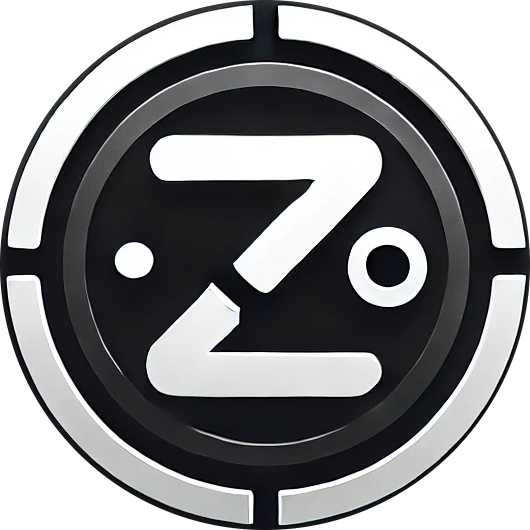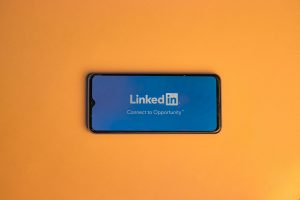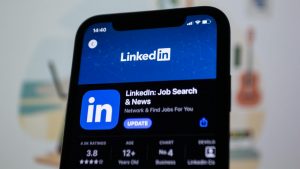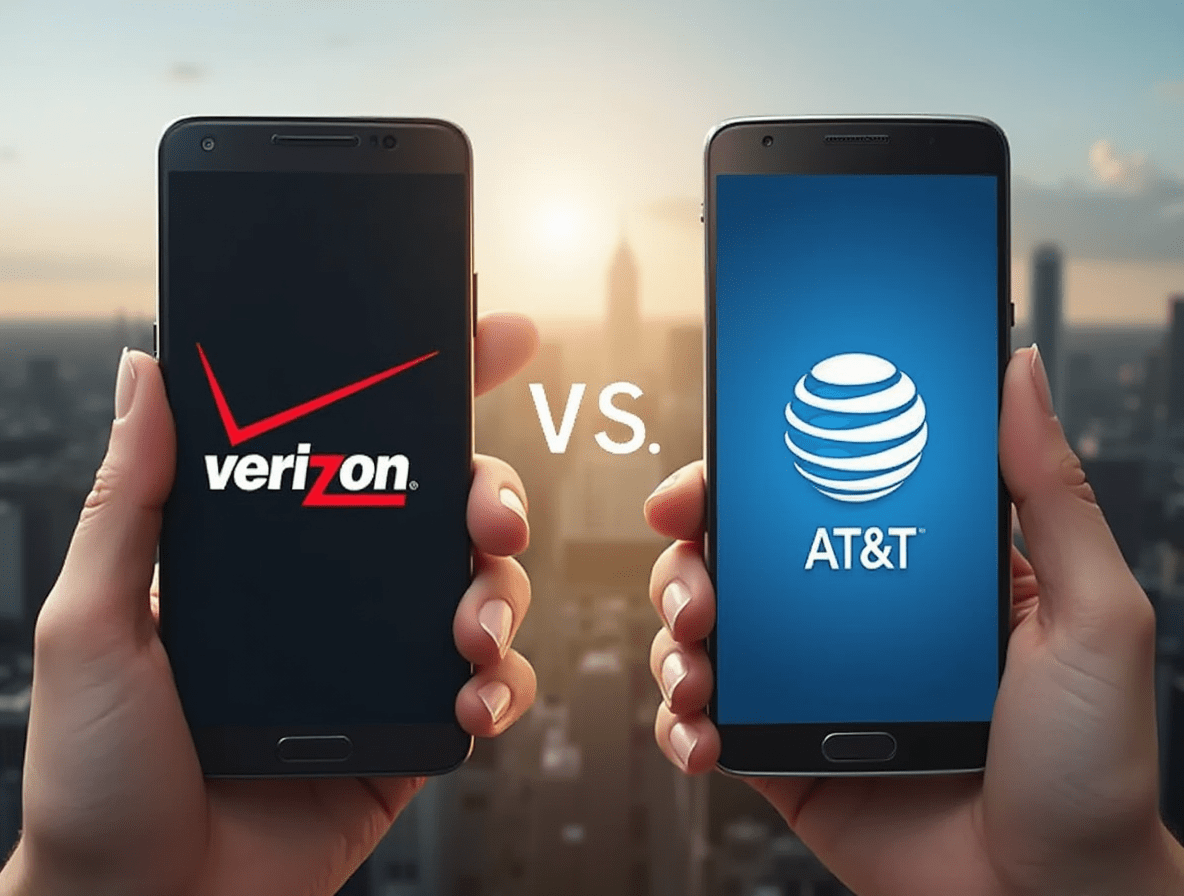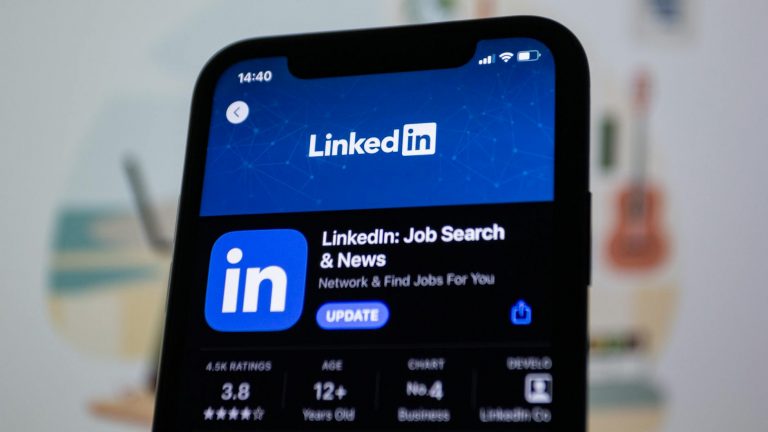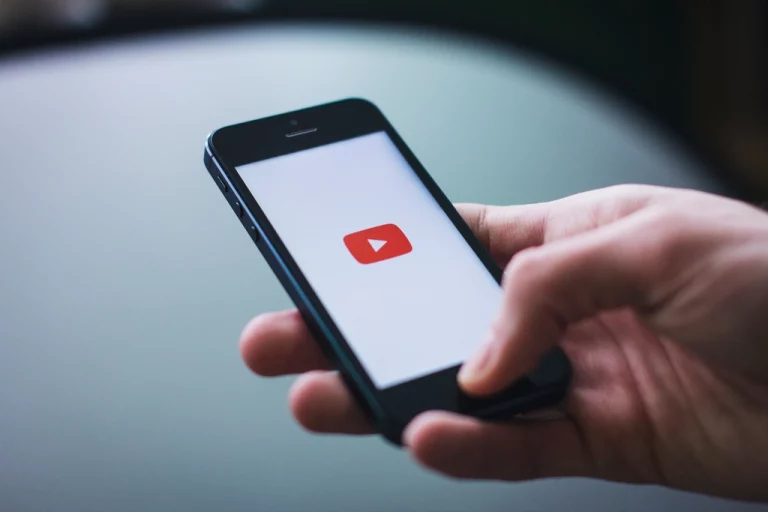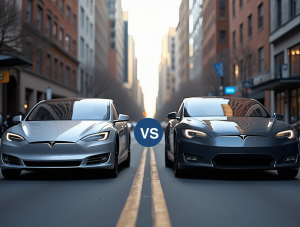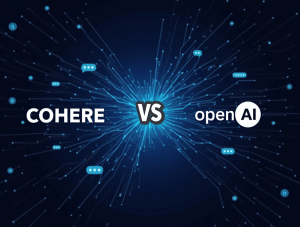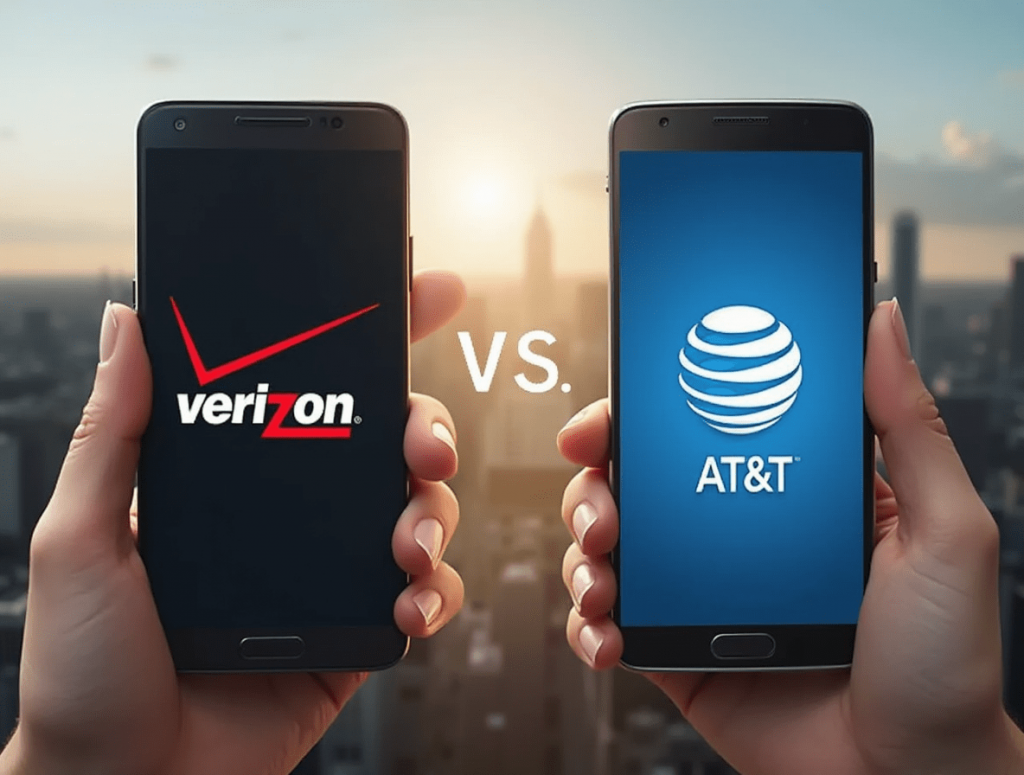
Finding the Best Mobile Coverage for Your Needs
Over 97% of Americans now rely on smartphones for daily communication, making reliable network coverage more essential than ever. If you’re trying to choose between Verizon and AT&T—two of America’s largest carriers—understanding their coverage differences can save you from frustrating dead zones and connectivity issues.
Both carriers claim to cover over 99% of Americans, but what does that really mean for your everyday experience? This guide breaks down exactly how Verizon and AT&T’s networks compare in 2025, from urban centers to rural backroads, and helps you determine which carrier will keep you better connected.
Network Coverage: The Basics Explained
Coverage Types: What You Need to Know
Mobile network coverage comes in several forms that affect your connection:
- Voice Coverage – Ability to make and receive calls
- 4G LTE Coverage – Standard data connection for most applications
- 5G Coverage – Next-generation high-speed data networks
- mmWave 5G – Ultra-fast but limited-range 5G service
National Coverage Percentages
How much of the country can each network reach?
- Verizon
- Voice/Text Coverage: 99.8% of populated areas
- 4G LTE Coverage: 98.9% of populated areas
- 5G Coverage: 84% of populated areas
- Ultra-Capacity 5G: 43% of populated areas
- AT&T
- Voice/Text Coverage: 99.7% of populated areas
- 4G LTE Coverage: 98.7% of populated areas
- 5G Coverage: 85% of populated areas
- High-band 5G: 32% of populated areas
How Coverage Maps Work
Understanding carrier coverage maps helps you make sense of the numbers:
- Self-reported data – Carriers create these maps based on their own network tests
- Theoretical coverage – Maps show where signal should reach under ideal conditions
- Outdated information – Maps may lag behind actual network deployments by several months
- Terrain impact – Maps don’t always account for hills, buildings, and other obstacles
Urban Network Performance: City Coverage Comparison
Major Metropolitan Areas
In the largest cities, differences appear in network quality rather than basic coverage:
- Network Congestion
- Verizon typically experiences more congestion in dense urban areas due to higher subscriber counts
- AT&T often delivers more consistent speeds during peak usage times in major cities
- Downtown Coverage
- Verizon excels in building penetration in urban cores
- AT&T provides better coverage in newer urban developments
- Public Transportation Routes
- Verizon offers better coverage in subway systems and underground tunnels
- AT&T performs better along commuter rail lines
Indoor Coverage Quality
How well signals penetrate into buildings matters for everyday use:
- Verizon’s Advantage – Uses more low-band spectrum (700 MHz) that penetrates buildings better
- AT&T’s Approach – Greater reliance on distributed antenna systems (DAS) in major buildings
- Commercial Buildings – Verizon leads in office building coverage
- Residential Coverage – More similar performance, with slight edge to Verizon in older buildings
Rural Coverage: Beyond the City Limits
Small Town Coverage
Outside major urban areas, the coverage difference becomes more noticeable:
- Small Cities (10,000-50,000 population)
- Verizon covers 97% of small cities with 4G LTE
- AT&T covers 95% of small cities with 4G LTE
- Signal Strength in Small Towns
- Verizon generally provides stronger signal in town centers
- AT&T offers more consistent coverage around town peripheries
Remote and Rural Areas
The biggest differences emerge in truly rural locations:
- Highway Coverage
- Verizon covers approximately 94% of U.S. interstate highways
- AT&T covers approximately 89% of U.S. interstate highways
- Agricultural Areas
- Verizon leads in farm country coverage, particularly in the Midwest and Great Plains
- AT&T shows stronger performance in rural Southeast regions
- Remote Recreation Areas
- Verizon performs better in most national parks and wilderness areas
- AT&T has focused on improving coverage in popular vacation destinations
5G Network Development: The Next Generation
5G Coverage Comparison
The 5G rollout continues with different approaches:
- Network Types
- Verizon’s 5G: Nationwide (low-band) and Ultra Wideband (mid-band & mmWave)
- AT&T’s 5G: Nationwide (low-band) and 5G+ (mid-band & mmWave)
- Mid-Band Deployment
- Verizon has converted more C-band spectrum to 5G service
- AT&T has focused on targeted deployments in high-traffic areas
- Ultra-Fast mmWave
- Verizon has deployed mmWave in parts of 87 cities
- AT&T has deployed mmWave in parts of 42 cities
Real-World 5G Performance
Marketing claims vs. actual user experience:
- Average 5G Speeds
- Verizon: 142 Mbps nationwide average (all 5G types)
- AT&T: 137 Mbps nationwide average (all 5G types)
- Ultra-Fast 5G Zones
- Verizon Ultra Wideband: 900+ Mbps in covered areas
- AT&T 5G+: 800+ Mbps in covered areas
- 5G Availability
- Verizon users connect to 5G about 36% of the time
- AT&T users connect to 5G about 33% of the time
Network Reliability: When You Need It Most
Outage Frequency
How often do networks experience problems?
- Major Outages (2024-2025)
- Verizon: 4 significant nationwide disruptions
- AT&T: 6 significant nationwide disruptions
- Weather Resilience
- Verizon has invested more in weather-hardened infrastructure
- AT&T recovers more quickly after major weather events
Network Congestion
How networks perform during peak usage times:
- Speed Reductions
- Verizon speeds decrease by an average of 32% during peak hours
- AT&T speeds decrease by an average of 28% during peak hours
- Event Performance
- Verizon handles large gatherings better through temporary towers
- AT&T provides more consistent service in venues with permanent installations
Mobile Hotspot and Rural Internet Options
Mobile Hotspot Performance
Using your phone as an internet connection:
- Hotspot Data Limits
- Verizon offers 25-50GB of premium hotspot data on top plans
- AT&T offers 30-60GB of premium hotspot data on top plans
- Hotspot Speeds
- Verizon maintains faster average hotspot connections
- AT&T provides more consistent hotspot performance
Rural Internet Alternatives
Beyond traditional mobile service:
- Fixed Wireless Options
- Verizon Home Internet covers 40+ million households
- AT&T Fixed Wireless Internet available to 25+ million households
- Rural Performance
- Verizon Home Internet averages 100-300 Mbps in covered areas
- AT&T Fixed Wireless averages 25-100 Mbps in covered areas
Coverage by Region: Geographic Breakdown
Regional Strengths
Different carriers excel in different parts of the country:
- Northeast
- Urban: Slight advantage to AT&T
- Rural: Clear advantage to Verizon
- Southeast
- Urban: Equal coverage
- Rural: AT&T generally stronger
- Midwest
- Urban: Equal coverage
- Rural: Verizon significantly stronger
- West
- Urban: Equal coverage
- Rural: Verizon stronger in mountains, AT&T better in desert regions
Coverage for Travelers
How networks perform for people on the move:
- Interstate Coverage
- Verizon covers more miles of interstate highways
- AT&T provides better coverage at rest stops and service areas
- Air Travel Corridors
- Verizon performs better along air travel routes
- AT&T offers stronger connections near major airports
Network Testing and Verification
Independent Testing Results
Third-party assessments provide unbiased comparisons:
- RootMetrics (2025 Report)
- Verizon: Winner in 4 out of 7 categories (reliability, accessibility, speed, data)
- AT&T: Winner in 3 out of 7 categories (call, text, overall performance)
- OpenSignal (Q1 2025)
- Verizon: Leader in availability and video experience
- AT&T: Leader in download speed and gaming experience
- Ookla Speedtest Intelligence
- Verizon: 194 Mbps average download (all technologies)
- AT&T: 201 Mbps average download (all technologies)
Real Customer Experiences
What actual users report about coverage:
- Customer Satisfaction Surveys
- Verizon: 75% of customers satisfied with coverage
- AT&T: 72% of customers satisfied with coverage
- Rural Customer Feedback
- Verizon rated higher by rural customers (68% satisfaction)
- AT&T rated higher by suburban customers (74% satisfaction)
Plans and Pricing: Coverage vs. Cost
Premium Unlimited Plans
High-end plans that maximize coverage benefits:
- Verizon 5G Get More ($90/line)
- Premium network access (no deprioritization)
- 50GB mobile hotspot data
- Access to all network technologies
- AT&T Unlimited Premium ($85/line)
- Premium network access (no deprioritization)
- 60GB mobile hotspot data
- Access to all network technologies
Budget-Friendly Options
More affordable plans with coverage trade-offs:
- Verizon Welcome Unlimited ($65/line)
- Standard network priority (may slow during congestion)
- Limited access to Ultra Wideband 5G
- No mobile hotspot data
- AT&T Unlimited Starter ($65/line)
- Standard network priority (may slow during congestion)
- Access to standard 5G
- 5GB mobile hotspot data
Making Your Decision: Which Carrier Is Right for You?
Best for Urban Users
City dwellers have different priorities:
- Choose Verizon if:
- You frequently visit large public venues
- Building penetration is important to you
- You need the fastest 5G in select areas
- Choose AT&T if:
- You want more consistent speeds during peak hours
- You live in newer urban developments
- Overall value is more important than peak speeds
Best for Rural Users
Country living requires different considerations:
- Choose Verizon if:
- You live in the Midwest or mountain regions
- Highway coverage is essential
- You spend time in remote recreational areas
- Choose AT&T if:
- You live in the Southeast
- You primarily stay near small towns
- You value consistent speeds over wider coverage
Conclusion: There’s No Perfect Answer
The “best” network depends entirely on where you live, work, and travel:
Verizon maintains an edge in overall coverage footprint, particularly in rural areas and along highways. Their focus on network reliability and extensive low-band deployments helps them reach more remote locations, though at the cost of higher congestion in some urban centers.
AT&T offers more consistent performance in many urban and suburban areas, with stronger speeds during peak usage times. Their network optimization provides better experiences in many populated areas, though with some gaps in truly remote regions.
For most users, the coverage differences will be subtle in day-to-day use, with the actual experience influenced by specific local factors like terrain, building construction, and network congestion. The best approach is to check coverage maps for your specific locations, ask neighbors about their experiences, and consider taking advantage of carriers’ trial periods to test performance before committing.
FAQ: Common Coverage Questions
Do Verizon and AT&T use the same towers?
Sometimes, but not always. Both carriers maintain their own network infrastructure but occasionally share tower locations through agreements with tower companies. However, even when on the same physical tower, they use different equipment and frequencies, resulting in different coverage patterns.
How do MVNOs like Visible or Cricket compare to main carriers?
MVNOs (Mobile Virtual Network Operators) use the same network infrastructure as their parent carriers—Visible uses Verizon’s network, Cricket uses AT&T’s—but with different priority levels. During network congestion, MVNO customers typically experience slower speeds as their traffic is given lower priority than the main carrier’s direct customers.
Does 5G really matter for coverage?
Yes and no. 5G doesn’t inherently provide better coverage than 4G—in fact, some 5G frequencies have shorter range. However, carriers are using their 5G deployments as opportunities to upgrade their entire network infrastructure, often resulting in improved coverage overall. Low-band 5G (600-700MHz) can actually offer slightly better building penetration than 4G.
How accurate are carrier coverage maps?
Carrier maps show theoretical coverage under ideal conditions and often overstate actual coverage. They typically don’t account for buildings, vegetation, or terrain that can block signals. Third-party coverage maps from services like RootMetrics or Opensignal, which use actual user data, generally provide more realistic coverage assessments.
If I frequently travel internationally, which carrier offers better global coverage?
AT&T has stronger international coverage, particularly in Latin America and Europe, due to more extensive roaming agreements. AT&T’s International Day Pass ($10/day) also tends to provide better value than Verizon’s TravelPass ($10/day) with fewer coverage limitations in participating countries.
